

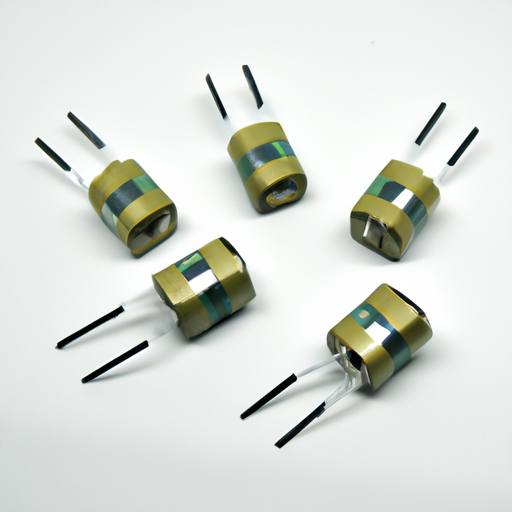
What are the Popular Adjustable Inductor Product Types? I. Introduction A. Definition of Adjustable InductorsAdjustable inductors are electronic components that allow for the modification of inductance values within a circuit. Unlike fixed inductors, which have a set inductance value, adjustable inductors can be tuned to meet specific circuit requirements. This tunability is crucial in various applications, enabling engineers and designers to optimize circuit performance. B. Importance of Adjustable Inductors in ElectronicsIn the realm of electronics, inductors play a vital role in filtering, energy storage, and signal processing. Adjustable inductors, in particular, are essential in applications where precise tuning is necessary, such as in radio frequency (RF) circuits, audio equipment, and power supplies. Their ability to adapt to changing conditions makes them invaluable in modern electronic design. C. Overview of the ArticleThis article will explore the different types of adjustable inductors, their features, applications, and factors to consider when selecting them. We will also discuss future trends in adjustable inductors, providing a comprehensive understanding of their significance in the electronics industry. II. Understanding Inductors A. Basic Principles of Inductance 1. Definition of InductanceInductance is the property of an electrical component that opposes changes in current. When current flows through a coil of wire, it generates a magnetic field around it. If the current changes, the magnetic field also changes, inducing a voltage in the coil that opposes the change in current. This phenomenon is known as self-induction. 2. Role of Inductors in CircuitsInductors are used in various applications, including filtering, energy storage, and signal processing. They are commonly found in power supplies, oscillators, and RF circuits. By storing energy in their magnetic fields, inductors can smooth out fluctuations in current and voltage, making them essential for stable circuit operation. B. Types of Inductors 1. Fixed InductorsFixed inductors have a predetermined inductance value that cannot be changed. They are widely used in applications where a specific inductance is required, such as in power supplies and filters. 2. Adjustable InductorsAdjustable inductors, as mentioned earlier, allow for the modification of inductance values. This flexibility makes them suitable for applications where tuning is necessary. III. Types of Adjustable Inductors A. Variable Inductors 1. Definition and FunctionalityVariable inductors, also known as variable inductance coils, allow users to adjust the inductance by changing the physical configuration of the inductor. This can be achieved through mechanisms such as sliding contacts or adjustable cores. 2. ApplicationsVariable inductors are commonly used in RF circuits, where precise tuning is required to match the frequency of the signal. They are also found in audio equipment, where they help in tuning circuits for optimal sound quality. B. Tapped Inductors 1. Definition and FunctionalityTapped inductors have multiple connection points (taps) along the coil, allowing users to select different inductance values. By connecting to different taps, the effective inductance can be changed without physically altering the inductor. 2. ApplicationsTapped inductors are often used in applications where multiple inductance values are needed, such as in radio transmitters and receivers. They provide a convenient way to switch between different inductance settings. C. Trimmer Inductors 1. Definition and FunctionalityTrimmer inductors are small, adjustable inductors designed for fine-tuning. They typically have a small adjustment screw that allows for precise changes in inductance. 2. ApplicationsTrimmer inductors are commonly used in RF circuits, oscillators, and other applications where fine-tuning is essential. They are often used in conjunction with other components to achieve optimal performance. D. Air-Core Inductors 1. Definition and FunctionalityAir-core inductors are inductors that do not use a magnetic core material. Instead, they rely on air as the core medium. This design allows for high-frequency operation and minimizes losses due to core saturation. 2. ApplicationsAir-core inductors are often used in RF applications, such as antennas and tuning circuits. Their low loss characteristics make them ideal for high-frequency signals. E. Ferrite-Core Inductors 1. Definition and FunctionalityFerrite-core inductors use ferrite materials as the core, which enhances inductance and reduces losses. These inductors are particularly effective at lower frequencies and are commonly used in power applications. 2. ApplicationsFerrite-core inductors are widely used in power supplies, filters, and transformers. Their ability to handle higher currents and voltages makes them suitable for various applications in electronics. IV. Key Features of Adjustable Inductors A. Adjustability and TuningThe primary feature of adjustable inductors is their ability to be tuned to specific inductance values. This adjustability allows engineers to optimize circuit performance based on varying conditions. B. Frequency ResponseAdjustable inductors can be designed to operate effectively across a range of frequencies. Their frequency response is crucial in applications such as RF circuits, where signal integrity is paramount. C. Size and Form FactorThe size and form factor of adjustable inductors can vary significantly. Smaller inductors are often preferred in compact electronic devices, while larger inductors may be used in power applications. D. Power Handling CapabilitiesThe power handling capabilities of adjustable inductors are essential for ensuring reliable operation in various applications. Inductors must be able to handle the expected current and voltage levels without overheating or failing. E. Temperature StabilityTemperature stability is a critical feature for adjustable inductors, as changes in temperature can affect inductance values. High-quality inductors are designed to maintain consistent performance across a range of temperatures. V. Applications of Adjustable Inductors A. RF and Microwave CircuitsAdjustable inductors are widely used in RF and microwave circuits for tuning and filtering applications. Their ability to adapt to different frequencies makes them essential for maintaining signal integrity. B. Audio EquipmentIn audio equipment, adjustable inductors are used in equalizers, filters, and tuning circuits. They help optimize sound quality by allowing for precise adjustments to the audio signal. C. Power Supply CircuitsAdjustable inductors play a crucial role in power supply circuits, where they help regulate voltage and current levels. Their ability to handle varying loads makes them suitable for a wide range of power applications. D. Communication SystemsIn communication systems, adjustable inductors are used for tuning and filtering signals. They help ensure that signals are transmitted and received accurately, minimizing interference and distortion. E. Test and Measurement EquipmentAdjustable inductors are often found in test and measurement equipment, where they are used for calibration and tuning purposes. Their precision and adjustability make them ideal for ensuring accurate measurements. VI. Factors to Consider When Choosing Adjustable Inductors A. Inductance RangeWhen selecting an adjustable inductor, it is essential to consider the inductance range required for the application. Different types of adjustable inductors offer varying ranges, so it is crucial to choose one that meets the specific needs of the circuit. B. Quality Factor (Q)The quality factor (Q) of an inductor is a measure of its efficiency. A higher Q indicates lower losses and better performance. When choosing an adjustable inductor, it is important to consider the Q factor to ensure optimal circuit performance. C. Current RatingThe current rating of an adjustable inductor indicates the maximum current it can handle without overheating or failing. It is essential to select an inductor with a current rating that meets or exceeds the requirements of the application. D. Voltage RatingThe voltage rating of an adjustable inductor is another critical factor to consider. It indicates the maximum voltage the inductor can withstand without breaking down. Choosing an inductor with an appropriate voltage rating is essential for reliable operation. E. Environmental ConsiderationsEnvironmental factors, such as temperature and humidity, can affect the performance of adjustable inductors. It is important to consider the operating environment when selecting an inductor to ensure it will perform reliably under the expected conditions. VII. Future Trends in Adjustable Inductors A. Technological AdvancementsAs technology continues to evolve, adjustable inductors are likely to see advancements in design and materials. Innovations in manufacturing processes may lead to more efficient and compact inductors, enhancing their performance in various applications. B. Miniaturization and IntegrationThe trend toward miniaturization in electronics is driving the development of smaller adjustable inductors. Integrated inductors that combine multiple functions into a single component may become more common, simplifying circuit design and reducing space requirements. C. Emerging ApplicationsAs new technologies emerge, the demand for adjustable inductors in novel applications is expected to grow. Areas such as electric vehicles, renewable energy systems, and advanced communication technologies may drive the need for innovative inductor designs. VIII. Conclusion A. Recap of Adjustable Inductor TypesIn summary, adjustable inductors are essential components in modern electronics, offering flexibility and tunability for various applications. The different types of adjustable inductors, including variable inductors, tapped inductors, trimmer inductors, air-core inductors, and ferrite-core inductors, each serve unique purposes in circuit design. B. Importance in Modern ElectronicsThe importance of adjustable inductors cannot be overstated. They play a critical role in optimizing circuit performance, ensuring signal integrity, and enabling precise tuning in a wide range of applications. C. Final Thoughts on Selection and UsageWhen selecting adjustable inductors, it is crucial to consider factors such as inductance range, quality factor, current and voltage ratings, and environmental conditions. By understanding the various types and features of adjustable inductors, engineers and designers can make informed decisions that enhance the performance and reliability of their electronic circuits. IX. References A. Academic Journals1. "Inductor Design and Applications" - Journal of Electronics and Communication Engineering2. "Advancements in Inductor Technology" - IEEE Transactions on Power Electronics B. Industry Publications1. "The Role of Inductors in Modern Electronics" - Electronics Weekly2. "Adjustable Inductors: A Comprehensive Guide" - Electronic Design Magazine C. Manufacturer Specifications1. Coilcraft Product Catalog2. Vishay Inductor Specifications---This blog post provides a detailed exploration of adjustable inductors, their types, features, applications, and considerations for selection. By understanding these components, readers can appreciate their significance in the ever-evolving field of electronics.
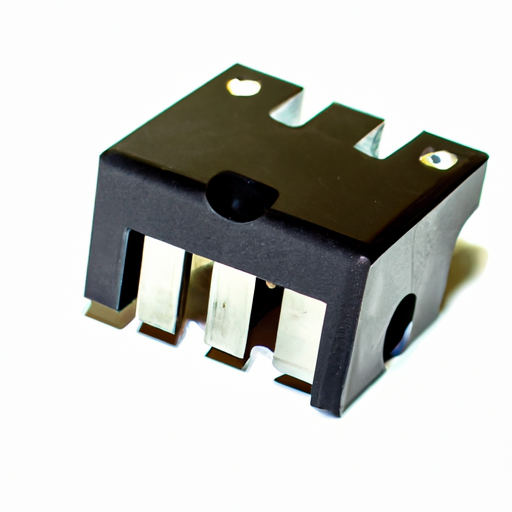
The Latest Adjustable Inductor Specifications I. Introduction A. Definition of Adjustable InductorsAdjustable inductors are electronic components that allow for the modification of inductance values within a circuit. Unlike fixed inductors, which have a predetermined inductance value, adjustable inductors can be tuned to meet specific circuit requirements. This tunability is crucial in applications where precise control over inductance is necessary, such as in radio frequency (RF) circuits, filters, and oscillators. B. Importance of Adjustable Inductors in Modern ElectronicsIn the rapidly evolving landscape of modern electronics, adjustable inductors play a pivotal role. They are integral to the performance of various devices, from smartphones to electric vehicles. Their ability to adapt to changing conditions and requirements makes them invaluable in applications that demand flexibility and precision. As technology advances, the specifications and capabilities of adjustable inductors continue to evolve, making it essential for engineers and designers to stay informed about the latest developments. C. Purpose of the ArticleThis article aims to provide a comprehensive overview of the latest specifications for adjustable inductors. By exploring their fundamental principles, types, recent technological advancements, and selection criteria, we hope to equip readers with the knowledge necessary to make informed decisions when working with these critical components. II. Overview of Inductors A. Basic Principles of Inductance 1. Definition of InductanceInductance is the property of an electrical conductor that opposes changes in current. When current flows through a coil of wire, it generates a magnetic field around it. If the current changes, the magnetic field also changes, inducing a voltage in the coil that opposes the change in current. This phenomenon is known as self-induction and is the fundamental principle behind inductors. 2. Role of Inductors in CircuitsInductors are used in various applications, including energy storage, filtering, and signal processing. They can smooth out fluctuations in current, store energy in magnetic fields, and help tune circuits to specific frequencies. In RF applications, inductors are essential for creating resonant circuits that can select or reject specific frequencies. B. Types of Inductors 1. Fixed InductorsFixed inductors have a constant inductance value and are used in applications where the inductance does not need to be adjusted. They are commonly found in power supplies, filters, and energy storage applications. 2. Adjustable InductorsAdjustable inductors, as previously mentioned, allow for the modification of inductance values. They are particularly useful in applications where tuning is required, such as in RF circuits and oscillators. C. Applications of Inductors in Various IndustriesInductors are used across a wide range of industries, including telecommunications, automotive, aerospace, and consumer electronics. In telecommunications, inductors are crucial for filtering signals and managing power. In the automotive industry, they are used in electric vehicles for energy management and in various control systems. The versatility of inductors makes them essential components in modern electronic devices. III. Specifications of Adjustable InductorsWhen selecting adjustable inductors, several key specifications must be considered to ensure optimal performance in a given application. A. Key Specifications to Consider 1. Inductance RangeThe inductance range is one of the most critical specifications for adjustable inductors. It defines the minimum and maximum inductance values that the inductor can achieve. Depending on the application, a wide inductance range may be necessary to accommodate varying circuit conditions. 2. Current RatingThe current rating indicates the maximum current the inductor can handle without overheating or saturating. Exceeding this rating can lead to performance degradation or failure. It is essential to select an inductor with a current rating that meets or exceeds the requirements of the application. 3. Voltage RatingThe voltage rating specifies the maximum voltage that can be applied across the inductor without causing breakdown or damage. This rating is particularly important in high-voltage applications, where exceeding the voltage rating can lead to catastrophic failure. 4. Quality Factor (Q)The quality factor (Q) is a measure of the inductor's efficiency and performance. A higher Q indicates lower energy losses and better performance in resonant circuits. It is calculated as the ratio of the inductive reactance to the resistance at a specific frequency. For applications requiring high efficiency, selecting an inductor with a high Q factor is crucial. 5. Self-Resonant Frequency (SRF)The self-resonant frequency (SRF) is the frequency at which the inductor's reactance becomes equal to its resistance, causing it to behave like a resistor rather than an inductor. Operating an inductor above its SRF can lead to significant performance issues, including reduced inductance and increased losses. Therefore, it is essential to consider the SRF when selecting an adjustable inductor for high-frequency applications. 6. Temperature CoefficientThe temperature coefficient indicates how the inductance value changes with temperature. A low temperature coefficient is desirable, as it ensures that the inductor maintains its inductance value across a range of operating temperatures. This stability is particularly important in applications where temperature fluctuations are common. B. Materials Used in Adjustable InductorsThe materials used in the construction of adjustable inductors significantly impact their performance and specifications. 1. Core MaterialsThe core material of an inductor affects its inductance, current rating, and overall performance. Common core materials include ferrite, iron, and air. Ferrite cores are often used in high-frequency applications due to their high permeability and low losses. Iron cores are suitable for low-frequency applications, while air cores are used in applications where low inductance values are required. 2. Wire MaterialsThe wire used to wind the inductor also plays a crucial role in its performance. Copper is the most common wire material due to its excellent conductivity. However, aluminum and other materials may be used in specific applications where weight or cost is a concern. 3. Insulation MaterialsInsulation materials are essential for preventing short circuits and ensuring the safe operation of inductors. Common insulation materials include enamel, plastic, and paper. The choice of insulation material can impact the inductor's voltage rating and overall reliability. IV. Types of Adjustable InductorsAdjustable inductors can be categorized into several types based on their construction and tuning mechanisms. A. Variable Inductors 1. Air-Core InductorsAir-core inductors use air as the core material, resulting in low inductance values and minimal losses. They are often used in high-frequency applications where low inductance and high Q factors are required. Air-core inductors are also lightweight and can be easily adjusted. 2. Ferrite-Core InductorsFerrite-core inductors use ferrite materials as the core, providing higher inductance values and better performance at lower frequencies. They are commonly used in RF applications and can be designed for adjustable inductance through mechanical or electronic means. B. Tuning Inductors 1. Mechanically Tuned InductorsMechanically tuned inductors allow for manual adjustment of the inductance value through physical means, such as a variable capacitor or a sliding core. These inductors are often used in applications where precise tuning is required, such as in radio transmitters and receivers. 2. Electronically Tuned InductorsElectronically tuned inductors use electronic components to adjust the inductance value. This can be achieved through techniques such as varactor diodes or digitally controlled tuning circuits. Electronically tuned inductors offer greater precision and can be integrated into automated systems. C. Applications and Use Cases for Each TypeThe choice of adjustable inductor type depends on the specific application requirements. Air-core inductors are ideal for high-frequency applications, while ferrite-core inductors are better suited for lower frequencies. Mechanically tuned inductors are commonly used in traditional radio equipment, while electronically tuned inductors are increasingly used in modern communication systems and automated tuning applications. V. Recent Advances in Adjustable Inductor TechnologyThe field of adjustable inductors has seen significant advancements in recent years, driven by the demands of emerging technologies and the need for improved performance. A. Innovations in Design and Materials 1. Miniaturization TrendsAs electronic devices become smaller and more compact, the demand for miniaturized inductors has increased. Manufacturers are developing smaller adjustable inductors without compromising performance. This trend is particularly evident in consumer electronics, where space is at a premium. 2. Enhanced Performance MetricsRecent innovations have led to improved performance metrics for adjustable inductors, including higher Q factors, wider inductance ranges, and better thermal stability. These enhancements enable designers to create more efficient and reliable circuits. B. Integration with Other Components 1. Inductor-Capacitor (LC) CircuitsAdjustable inductors are increasingly being integrated with capacitors to form LC circuits. These circuits are essential for filtering and tuning applications, and the ability to adjust inductance allows for greater flexibility in circuit design. 2. Smart Inductors with Integrated SensorsThe rise of the Internet of Things (IoT) has led to the development of smart inductors with integrated sensors. These inductors can monitor their performance and provide real-time data to optimize circuit operation. This integration enhances the functionality of adjustable inductors and opens up new possibilities for automation and control. C. Impact of Emerging Technologies 1. 5G and RF ApplicationsThe rollout of 5G technology has created new demands for adjustable inductors in RF applications. These inductors must operate efficiently at higher frequencies and support the increased data rates associated with 5G networks. Manufacturers are responding by developing inductors with improved performance characteristics tailored for these applications. 2. Electric Vehicles and Renewable Energy SystemsAdjustable inductors are also playing a crucial role in the development of electric vehicles and renewable energy systems. They are used in power management systems, energy storage solutions, and inverters, where their ability to adapt to changing conditions is essential for optimal performance. VI. Selecting the Right Adjustable InductorChoosing the right adjustable inductor for a specific application requires careful consideration of several factors. A. Factors to Consider 1. Application RequirementsUnderstanding the specific requirements of the application is crucial when selecting an adjustable inductor. Factors such as frequency range, current and voltage ratings, and inductance range must be taken into account to ensure compatibility with the circuit. 2. Environmental ConditionsThe operating environment can significantly impact the performance of adjustable inductors. Factors such as temperature, humidity, and exposure to contaminants should be considered when selecting materials and specifications. 3. Cost ConsiderationsWhile performance is essential, cost is also a critical factor in the selection process. Engineers must balance the need for high-performance inductors with budget constraints, ensuring that the chosen component meets both technical and financial requirements. B. Common Mistakes to Avoid 1. Overlooking SpecificationsOne of the most common mistakes when selecting adjustable inductors is overlooking critical specifications. Engineers must carefully review all relevant specifications to ensure that the chosen inductor meets the requirements of the application. 2. Ignoring Manufacturer GuidelinesManufacturers often provide guidelines and recommendations for the use of their products. Ignoring these guidelines can lead to suboptimal performance or even failure. It is essential to consult manufacturer datasheets and specifications when selecting adjustable inductors. VII. Conclusion A. Summary of Key PointsAdjustable inductors are vital components in modern electronics, offering flexibility and precision in various applications. Understanding their specifications, types, and recent advancements is essential for engineers and designers working in this field. B. Future Trends in Adjustable Inductor TechnologyAs technology continues to evolve, we can expect further advancements in adjustable inductor technology. Innovations in materials, design, and integration with other components will drive improvements in performance and functionality. C. Final Thoughts on the Importance of Understanding SpecificationsIn conclusion, a thorough understanding of adjustable inductor specifications is crucial for successful circuit design and implementation. By staying informed about the latest developments and carefully considering application requirements, engineers can make informed decisions that enhance the performance and reliability of their electronic systems. VIII. References A. Academic Journals1. Smith, J. (2022). "Advancements in Inductor Technology: A Review." *Journal of Electronics and Electrical Engineering*.2. Johnson, L. (2023). "The Role of Inductors in Modern RF Applications." *IEEE Transactions on Microwave Theory and Techniques*. B. Industry Reports1. "Global Inductor Market Trends 2023." *Market Research Future*.2. "Emerging Technologies in Inductor Design." *Electronics Weekly*. C. Manufacturer Specifications and Datasheets1. Vishay Intertechnology. "Adjustable Inductor Datasheet."2. Murata Manufacturing Co., Ltd. "Inductor Product Catalog." This blog post provides a comprehensive overview of adjustable inductors, their specifications, types, recent advancements, and selection criteria, ensuring that readers are well-equipped to navigate this essential component in modern electronics.

Market Prospects Analysis of Fixed Inductors IntroductionFixed inductors are passive components widely used in electronic circuits, based on the principle of using the characteristics of inductance to store and release electrical energy. The main functions of inductors include filtering, energy storage, coupling, and impedance matching. With the continuous development of electronic devices, the importance of fixed inductors in consumer electronics, industrial equipment, and automotive electronics is becoming increasingly prominent. This article aims to analyze the market prospects of fixed inductors, discuss the current market situation, driving factors, challenges and risks, as well as future development trends. Current Market Situation of Fixed Inductors 1. Global Market SizeIn recent years, the market size of fixed inductors has shown a steady growth trend. According to market research data, the global market size of fixed inductors reached billions of dollars in 2022 and is expected to continue growing in the coming years. The Asia-Pacific region is the main region for the fixed inductor market, especially countries like China, Japan, and South Korea, which have strong electronic manufacturing bases, becoming the main production and consumption markets for inductors worldwide. 2. Main Application AreasFixed inductors are widely used in various application areas, including:Consumer Electronics: With the popularity of smartphones, TVs, speakers, and other consumer electronics products, the demand for fixed inductors continues to increase. Especially with the advancement of 5G technology, the performance requirements for inductors in consumer electronics products are also constantly increasing.Industrial Equipment: Fixed inductors play a crucial role in industrial equipment such as motor drives and inverters. With the advancement of industrial automation, the demand for inductors is also increasing.Automotive Electronics: The rise of electric vehicles and autonomous driving technology has significantly increased the demand for fixed inductors in automotive electronics. Inductors play an important role in the power management and power systems of electric vehicles. 3. Major Manufacturers and Competitive LandscapeIn the fixed inductor market, major manufacturers include Murata, TDK, Vishay, Würth Elektronik, and others. These companies occupy a large market share due to their technological advantages and market experience. The market competition is relatively concentrated, and the technological barriers and brand effects in the industry pose significant challenges to new entrants. Market Driving Factors 1. Growth in Electronic Product DemandWith technological advancements and improvements in living standards, the demand for consumer electronics products continues to grow. The popularity of smartphones, tablets, smart homes, and other products drives the demand for fixed inductors. Additionally, the rapid development of emerging technologies such as 5G and the Internet of Things brings new opportunities to the inductor market. 2. Rise of Electric Vehicles and Renewable EnergyThe proliferation of electric vehicles has significantly increased the demand for inductors. Fixed inductors are required in the power management systems, charging stations, and other equipment of electric vehicles. Furthermore, with the increasing application of renewable energy sources, fixed inductors are also widely used in wind and solar power generation systems. 3. Industrial Automation and Smart ManufacturingThe advent of Industry 4.0 has driven the development of industrial automation and smart manufacturing. The application of fixed inductors in robots, automation equipment, and smart sensors further promotes market growth. Market Challenges and Risks 1. Fluctuations in Raw Material PricesThe production of fixed inductors depends on magnetic and wire materials, and fluctuations in raw material prices may affect production costs. Especially against the backdrop of increased global economic uncertainty, the risk of fluctuating raw material prices is heightened. 2. Technological Advancements and Threats from AlternativesWith continuous technological advancements, the emergence of new inductor technologies and alternative products (such as capacitors) may impact the traditional fixed inductor market. Manufacturers need to innovate constantly to maintain competitiveness. 3. Trade Policies and Market AccessChanges in international trade policies may affect market access for fixed inductors. Trade barriers and policy restrictions in various countries may impact market openness and the competitive environment. Future Development Trends 1. Technological InnovationIn the future, technological innovation in fixed inductors will be a key driver of market development. The application of new materials (such as nanomaterials) and the development of miniaturized, high-performance inductors will propel the industry forward. 2. Market SegmentationWith the diversification of market demand, the market for fixed inductors will gradually segment. Customized products for specific industries will become a trend, and the differentiation between the high-end and low-end markets will become more pronounced. 3. Sustainable DevelopmentEnvironmental protection and sustainable development will be important directions for the future fixed inductor market. Manufacturers will pay more attention to the use of environmentally friendly materials and energy-saving measures in the production process to meet the market demand for sustainable products. ConclusionIn conclusion, the market prospects for fixed inductors are promising, benefiting from the growth in demand for electronic products, the rise of electric vehicles and renewable energy, and the promotion of industrial automation. However, the market also faces challenges such as fluctuations in raw material prices, technological advancements, and threats from alternatives. For investors and businesses, paying attention to market dynamics, grasping technological innovation, and market segmentation trends will be key to future success. References1. Market research reports2. Industry journals and academic papers3. Company annual reports and market analysis dataThrough the above analysis, we can see that the potential and challenges coexist in the fixed inductor market, and future development requires joint efforts from all parties to drive continuous progress in the industry.

What is the working principle of Integrated Circuit (IC)? IntroductionIntegrated Circuit (IC) is the cornerstone of modern electronics technology. It integrates multiple electronic components on a small chip, greatly promoting the miniaturization and enhancement of electronic devices. Since its first appearance in the late 1950s, ICs have become an indispensable part of almost all electronic devices. From smartphones, computers to automotive electronics and industrial control, the application of integrated circuits is ubiquitous. This article will delve into the working principle, basic components, manufacturing process, as well as the applications and development trends of integrated circuits.Basic Components of Integrated CircuitsSemiconductor MaterialsThe core of an integrated circuit is semiconductor materials, especially silicon (Si). Silicon is a material with good conductivity and insulation properties, suitable for manufacturing components like transistors. In addition to silicon, other semiconductor materials such as gallium arsenide (GaAs) are also used for specific applications, especially in high-frequency and optoelectronic devices.Major ComponentsIntegrated circuits are typically composed of the following basic components:Transistors: Serving as the basic elements for switches and amplifiers, transistors play a crucial role in integrated circuits.Resistors: Used to limit current and divide voltage, resistors help control the flow of current in the circuit.Capacitors: Used for storing energy and filtering, capacitors play an important role in signal processing and power management.Logic Gates and CircuitsLogic gates in integrated circuits are the basic units for digital operations. Common logic gates include AND, OR, NOT gates, which combine to form complex logic circuits to perform various calculations and control tasks.Classification of Integrated CircuitsIntegrated circuits can be classified into the following categories based on their function and application:Digital Integrated CircuitsDigital integrated circuits are mainly used for logic operations and data storage. They operate using binary signals (0 and 1) and are widely used in computers, smartphones, and other digital devices. Digital integrated circuits can be further divided into:Logic circuits: Used for basic logic operations.Memory: Used for data storage, such as Random Access Memory (RAM) and Read-Only Memory (ROM).Analog Integrated CircuitsAnalog integrated circuits are used for processing continuous signals, mainly applied in signal amplification and processing. They play a crucial role in areas such as audio, video, and sensors. The main types of analog integrated circuits include:Amplifiers: Used to enhance signal strength.Linear circuits: Used for processing linear signals.Mixed-Signal Integrated CircuitsMixed-signal integrated circuits combine the characteristics of digital and analog circuits, capable of processing both digital and analog signals simultaneously. These circuits are very common in applications such as communication, audio processing, and sensors.Working Principle of Integrated CircuitsBasic Working PrincipleThe working principle of integrated circuits is based on the control of current and voltage. By controlling the flow of current, transistors can switch between on and off states, thereby achieving logic operations. The flow of current and changes in voltage are the foundation for the functionality of integrated circuits.Role of TransistorsTransistors are the core components of integrated circuits, mainly divided into N-type and P-type semiconductors. N-type semiconductors have excess electrons and can conduct electricity, while P-type semiconductors have "holes" with a lack of electrons and can also conduct electricity. When N-type and P-type semiconductors are combined, a PN junction is formed, leading to the switching behavior of transistors.N-type semiconductor: Has excess electrons, capable of conducting electricity.P-type semiconductor: Has "holes" with a lack of electrons, also capable of conducting electricity.By controlling the base current, transistors can switch between conducting and cutoff states, thereby achieving switching functions.Implementation of Logic OperationsLogic operations in integrated circuits are achieved through logic gates. Each type of logic gate has specific input and output relationships:AND gate: Output is 1 only when all inputs are 1.OR gate: Output is 1 as long as one input is 1.NOT gate: Output is 0 when input is 1; output is 1 when input is 0.These basic logic gates can be combined to form more complex circuits to perform various logic operations such as addition, multiplication, etc.Manufacturing Process of Integrated CircuitsThe manufacturing process of integrated circuits is complex and precise, mainly consisting of the following steps:Preparation of Silicon WafersThe first step in manufacturing integrated circuits is preparing silicon wafers. High-purity silicon is melted and drawn into a single crystal rod, which is then cut into thin slices to form silicon wafers.PhotolithographyPhotolithography is a key step in transferring circuit patterns onto silicon wafers. By coating with photosensitive material (photoresist) and using ultraviolet light exposure, circuit patterns are formed.Etching and DopingAfter photolithography, the silicon wafer undergoes etching to remove unwanted parts, forming the structure of the circuit. At the same time, doping techniques are used to introduce other elements into silicon to change its conductivity, forming N-type and P-type semiconductors.Packaging and TestingFinally, the completed integrated circuit needs to be packaged to protect its internal structure and provide electrical connections. The packaged ICs also need to undergo rigorous testing to ensure their performance and reliability.Applications of Integrated CircuitsThe widespread application of integrated circuits has driven technological advancements in various industries, including:Consumer ElectronicsIntegrated circuits are the core components of consumer electronics such as smartphones, computers, and televisions, providing powerful computing and processing capabilities.Communication DevicesIn communication devices, integrated circuits are used for signal processing, modulation/demodulation, and data transmission, ensuring fast and accurate information transfer.Automotive ElectronicsIntegrated circuits in modern cars are used for controlling engines, navigation systems, safety systems, etc., enhancing the intelligence and safety of vehicles.Industrial ControlIn the field of industrial control, integrated circuits are used for automation equipment, sensors, and control systems, improving production efficiency and product quality.Development Trends of Integrated CircuitsWith continuous technological advancements, the development trends of integrated circuits mainly focus on the following aspects:Technological Advancements (such as Moore's Law)Moore's Law predicts that the integration density of integrated circuits will double every two years. This trend drives the performance improvement and cost reduction of integrated circuits.Low-Power DesignWith the proliferation of mobile devices and the Internet of Things, low-power design has become an important direction for the development of integrated circuits. By optimizing circuit design and material selection, power consumption is reduced, and energy efficiency is improved.3D Integrated Circuits3D integrated circuit technology further enhances integration density and performance by stacking multiple circuit layers together. This technology shows great potential in high-performance computing and memory applications.Integration of Artificial Intelligence and Integrated CircuitsWith the development of artificial intelligence technology, integrated circuits designed specifically for AI applications (such as TPUs) are emerging. These circuits can efficiently process large-scale data and complex calculations, driving the advancement of AI technology.ConclusionThe invention and development of integrated circuits have had a profound impact on modern technology. They have not only promoted the miniaturization and enhancement of electronic devices but also advanced technological progress in various industries. With continuous technological advancements, integrated circuits will continue to play a crucial role in the future, driving innovation and development in various fields. Whether in consumer electronics, communication, automotive electronics, or industrial control, integrated circuits will continue to lead the forefront of technology and shape our future.
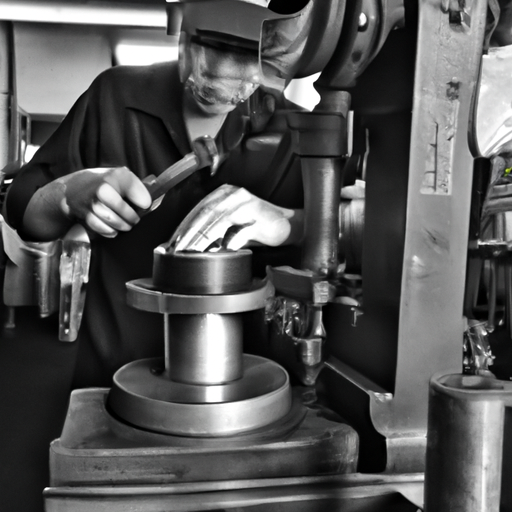
Common Production Processes of Chokes IntroductionChokes are important electrical components widely used in power management, signal processing, filters, and electromagnetic interference suppression. Their main function is to limit current variations, smooth current waveforms, and protect the stability and reliability of circuits. With the continuous development of electronic technology, the demand for chokes has been increasing year by year, driving the continuous improvement of their production processes. This article will discuss in detail the basic structure of chokes, the classification of production processes, the specific processes of traditional and modern production processes, and future development trends. Basic Structure of ChokesChokes are mainly composed of a magnetic core and a winding. The choice of magnetic core material directly affects the performance of the choke, while the winding material determines its electrical characteristics. The following are the basic structural elements of chokes: 1. Material CompositionMagnetic core material: Common magnetic core materials include ferrite, silicon steel, and powdered iron cores. Different materials have different magnetic properties, and choosing the right magnetic core material can improve the efficiency and stability of the choke. Winding material: Copper wire or aluminum wire is usually used as winding material. Copper wire has good conductivity and oxidation resistance, while aluminum wire is relatively lightweight and cost-effective. 2. Structural DesignShape and size: The shape and size of chokes directly affect their electrical performance and heat dissipation capability. Common shapes include ring, square, and cylindrical, and the design should be selected according to specific applications.Heat dissipation design: In high-power applications, chokes generate a certain amount of heat, so heat dissipation design is crucial. Increasing heat sinks, optimizing air circulation, and other methods can improve heat dissipation efficiency. Overview of Choke Production ProcessesThe production processes of chokes can be divided into traditional processes and modern processes. Traditional processes mainly rely on manual operation, while modern processes introduce automation and intelligent technologies, greatly improving production efficiency and product quality. 1. Classification of Production ProcessesTraditional processes: Including manual winding, manual assembly, etc., suitable for small-batch production, but with low efficiency and prone to human errors.Modern processes: Using automation equipment and precision machining technology, it can achieve large-scale production, ensuring product consistency and high quality. Traditional Production ProcessesThe traditional production processes of chokes mainly include the following steps: 1. Material PreparationBefore production, it is necessary to select suitable magnetic core and winding materials and carry out necessary pretreatment. The magnetic core material usually needs to be cut and shaped to meet design requirements. 2. Magnetic Core ProcessingThe processing of the magnetic core includes cutting and shaping, as well as surface treatment. During cutting, precise dimensions are required, and during shaping, the shape of the magnetic core must meet design requirements. Surface treatment can improve the magnetic performance of the core and reduce energy loss. 3. Winding ProcessThe winding process is a key link in choke production. When winding with a winding machine, it is necessary to ensure that the number of turns and arrangement of the winding meet design requirements to ensure the stability of electrical performance. 4. Assembly and WeldingAfter completing the winding, assemble the magnetic core and winding, and use welding technology to connect the circuit. During welding, attention should be paid to the quality of the welds to ensure the reliability of electrical connections. 5. Testing and InspectionPerform performance tests on finished products to ensure they meet quality standards. Testing includes inductance value, DC resistance, withstand voltage, etc., to ensure the reliability of chokes in practical applications. Modern Production ProcessesModern choke production processes have introduced many advanced technologies, mainly in the following aspects: 1. Automation ProductionThe application of automation equipment has greatly improved production efficiency and reduced manual intervention. Automated production lines can achieve continuous production, reducing production costs. 2. Precision Machining TechnologyIn modern production, CNC technology and laser cutting are widely used. CNC technology can improve processing accuracy, while laser cutting can achieve efficient processing of complex shapes, ensuring product consistency. 3. Material InnovationWith the development of technology, the research and development of new magnetic materials are constantly advancing. New materials not only improve the performance of chokes but also focus on the use of environmentally friendly materials, meeting the requirements of sustainable development. 4. Intelligent ManagementThrough data analysis and monitoring systems, companies can monitor the production process in real-time, optimize production processes, and improve production management levels. This intelligent management not only improves production efficiency but also can identify and solve problems in a timely manner. Optimization and Improvement of Production ProcessesDuring the production process, companies should continuously optimize production processes, control costs, and improve efficiency. Here are some suggestions for optimization and improvement: 1. Optimization of Production ProcessesBy analyzing production processes, identifying bottleneck processes, and making reasonable adjustments and optimizations to improve overall production efficiency. 2. Cost Control and Benefit AnalysisRegularly conduct cost analysis, find ways to reduce costs, and evaluate production benefits to ensure maximization of economic benefits for the company. 3. Environmental Protection and Sustainable DevelopmentDuring the production process, pay attention to environmental issues, use environmentally friendly materials and processes, reduce the impact of production on the environment, and promote the healthy development of the industry. ConclusionThe production processes of chokes are moving towards automation, intelligence, and environmental protection. In the future, with the continuous advancement of technology, the production efficiency and product quality of chokes will be further improved, having a profound impact on the entire electronics industry. While pursuing economic benefits, companies should also pay attention to social responsibility and environmental protection to achieve sustainable development. ReferencesDuring the writing process, references were made to relevant books, research papers, and industry standards, providing theoretical support and practical basis for this article. Here are some references:1. "Fundamentals of Electrical Engineering" - Zhang San2. "Modern Electronic Component Technology" - Li Si3. "Magnetic Materials and Applications" - Wang Wu4. Industry Standards and Regulations - National Standardization Management CommitteeBy delving into the production processes of chokes, it is hoped that valuable references can be provided for practitioners in related industries, promoting further development and application of choke technology.
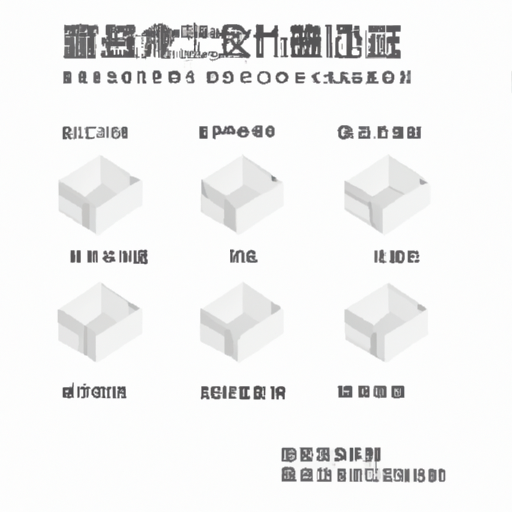
Coil Product Training Precautions IntroductionIn modern industry and electronics, coil products play a crucial role. Whether in motors, transformers, inductors, or in wireless communication equipment, the application of coils is ubiquitous. Therefore, training on coil products is particularly important. This article will discuss the precautions for coil product training, aiming to help trainers and trainees better understand and master the relevant knowledge and skills of coil products.The purpose of training is not only to impart knowledge but also to enhance the practical operation and problem-solving abilities of trainees. Through systematic training, trainees can better understand the working principles of coils, their application areas, and their importance in practical work. This article will provide you with a detailed training outline to help you make the training process more targeted and effective. Part One: Preparing for Training 1.1 Establish Training ObjectivesBefore conducting coil product training, it is essential to clarify the specific training objectives. These objectives should be specific and measurable. For example, training objectives could include enabling students to grasp the basic concepts of coils, understand their working principles, and perform simple performance tests. Setting measurable outcome indicators, such as assessing students' knowledge mastery through tests, can help trainers evaluate the effectiveness of the training after it concludes. 1.2 Understand the Audience BackgroundUnderstanding the audience's background is key to the success of training. The audience's level of professional knowledge, work experience, and learning needs and expectations will directly influence the content and methods of training. If the audience is beginners, the training content should be more basic, focusing on conceptual explanations; whereas for students with some foundation, in-depth discussions on technical details and practical applications can be conducted. 1.3 Collect Training MaterialsBefore training, collecting relevant training materials is essential. This includes product manuals, technical documents, industry standards, and specifications. These materials can not only serve as references for training content but can also be provided to students during the training process to help them better understand the knowledge they are learning. Part Two: Training Content Design 2.1 Product KnowledgeThe basic concepts and classifications of coils are the foundation of training. Trainers should explain in detail the definition of coils, their types (such as inductor coils, transformer coils, etc.), and their basic characteristics. In addition, the working principles and application areas of coils are also important knowledge points. Explaining the application of coils in different fields through examples can help students better understand the importance of coils. 2.2 Technical DetailsAfter mastering the basic concepts, students need to delve into the manufacturing processes, performance parameters, and testing methods of coils. Trainers can help students understand how the performance of coils affects their application effects by explaining technical details such as material selection, winding processes, and insulation treatments. Additionally, introducing common testing methods such as DC resistance testing, AC impedance testing, etc., can enhance students' practical operation abilities. 2.3 Practical Case StudiesSharing successful case studies can help students understand the application effects of coil products more intuitively. Trainers can select some successful cases in the industry, analyze the technical principles and application strategies behind them. Furthermore, discussing common problems and solutions is also crucial as it can help students better address challenges in their actual work. Part Three: Training Methods and Techniques 3.1 Interactive TeachingInteractive teaching can effectively enhance students' engagement and learning interest. Through group discussions, case studies, role-playing, etc., students can deepen their understanding of knowledge through practice. Trainers should encourage students to actively participate, share their insights and experiences, thereby promoting knowledge exchange and collision. 3.2 Multimedia AssistanceThe development of modern technology provides a wealth of multimedia tools for training. Using tools such as PPTs, videos, etc., can make training content more vivid and interesting. Additionally, live demonstrations and physical displays can help students better understand the structure and working principles of coils. Trainers should flexibly use multimedia tools according to the needs of the training content to enhance the effectiveness of training. 3.3 Evaluation and FeedbackEvaluating the training effectiveness is an important part of the training process. Trainers can assess students' learning outcomes through tests, questionnaires, etc. Collecting students' feedback, understanding their views on the training content and methods, can help make improvements in future training. Part Four: Follow-up After Training 4.1 Provide Ongoing SupportAfter the training concludes, providing ongoing support is essential to ensure that students can apply the knowledge they have learned to their actual work. Establishing student exchange groups and encouraging communication and collaboration among students can help them support each other in their work. Additionally, providing online resources and a platform for answering questions can facilitate students in solving practical work-related issues. 4.2 Continuous Learning and DevelopmentThe technology of coil products is constantly evolving, and students need to maintain a mindset of continuous learning. Trainers can recommend relevant books, courses, encourage students to participate in industry conferences and exhibitions to stay informed about the latest industry trends and technological developments. Through continuous learning, students can continuously improve their professional skills and adapt to changes in the industry. ConclusionCoil product training is not just about imparting knowledge but also about enhancing skills. Through systematic training, students can better understand the working principles of coils, their application areas, and their importance in practical work. Continuous learning and practice are key to improving professional skills. Encouraging students to apply the knowledge they have learned to their actual work will help them achieve greater success in their careers.In future training, we should continuously summarize experiences, improve training methods to better meet the learning needs of students. We hope that every student participating in the training can gain knowledge and skills, laying a solid foundation for their career development. Appendix References and Sources of Information1. "Fundamentals of Electromagnetics" - Author: Zhang San2. "Coil Design and Application" - Author: Li Si3. Industry standards and specification documents Example Training Schedule| Time | Content | Trainer ||--------------|--------------------------|--------------|| 09:00-09:30 | Training Introduction and Objective Setting | Trainer A || 09:30-10:30 | Basic Concepts and Classification of Coils | Trainer B || 10:30-10:45 | Tea Break | || 10:45-12:00 | Working Principles and Application Areas of Coils | Trainer C || 12:00-13:00 | Lunch | || 13:00-14:30 | Manufacturing Processes and Performance Parameters of Coils | Trainer D || 14:30-15:30 | Practical Case Studies | Trainer E || 15:30-15:45 | Tea Break | || 15:45-17:00 | Interactive Teaching and Evaluation | Trainer F | Frequently Asked Questions (FAQ)**Q1: Who are the main audience of the training?**A1: The main audience of the training includes engineers, technical personnel, and professionals in related industries.**Q2: How long is the training duration?**A2: The training duration is usually one day, and the specific arrangement can be adjusted according to the actual situation.**Q3: Will a certificate be provided after the training?**A3: Yes, upon completion of the training, students will receive a training certificate.
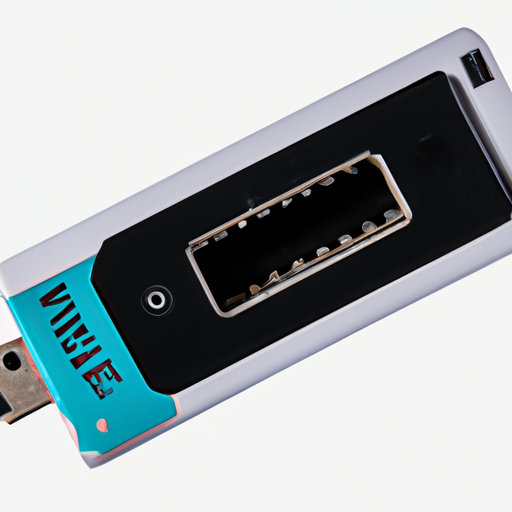
Popular Models of Inductors IntroductionInductors are essential components in electronic circuits, storing electrical energy and releasing it when the current changes. Inductors achieve this function by generating a magnetic field in a conductor when current flows through it, and they are widely used in filtering, oscillating, and energy storage applications. With the continuous development of electronic technology, the variety and models of inductors are becoming increasingly diverse. This article aims to introduce some popular models of inductors and their applications, helping readers better understand the importance of inductors in modern electronic devices. 1. Basic Concepts of Inductors 1.1 Definition of InductorsAn inductor is a passive component that can store electrical energy, and its operation is based on Faraday's law of electromagnetic induction. When current flows through an inductor, a magnetic field is generated around it, and the change in the magnetic field induces an electromotive force inside the inductor, affecting the change in current. The unit of inductance is Henry (H), and its calculation formula is:\[ L = \frac{N \Phi}{I} \]where \( L \) is the inductance value, \( N \) is the number of turns in the coil, \( \Phi \) is the magnetic flux, and \( I \) is the current. 1.2 Classification of InductorsInductors can be classified according to different standards:Fixed inductors vs. variable inductors: Fixed inductors have a fixed inductance value that cannot be adjusted, while variable inductors can change their inductance value by adjusting the structure or position.Air-core inductors vs. iron-core inductors: Air-core inductors have no magnetic core in the coil, while iron-core inductors have ferromagnetic materials inside to enhance the magnetic field.High-frequency inductors vs. low-frequency inductors: High-frequency inductors are suitable for processing high-frequency signals, while low-frequency inductors are used for low-frequency signals. 2. Overview of Popular Inductor Models 2.1 Chip InductorsChip inductors are widely used in modern electronic devices due to their small size and ease of automated production. They are characterized by low direct current resistance (DCR), high current carrying capacity, and good temperature stability. Common chip inductor models include 0603, 0805, 1008, etc., which represent their dimensions as 0.06 inches × 0.03 inches, 0.08 inches × 0.05 inches, and 0.1 inches × 0.08 inches, respectively.**Applications**: Chip inductors are used in consumer electronics products such as mobile phones, tablets, and wireless devices for power management, filtering, and signal processing. 2.2 Coil InductorsCoil inductors are typically made of wound wires and have a simple structure suitable for various applications. Common models include the E series and R series, where E series inductors are often used in power and signal processing, while R series inductors are more commonly used in audio devices.**Applications**: Coil inductors play a role in filtering, energy storage, and current limitation in applications such as power management and audio devices. 2.3 Ferrite Core InductorsFerrite core inductors use ferrite materials as magnetic cores, offering excellent magnetic properties and high-frequency characteristics. Common models include the FB series and FT series, where the FB series is suitable for switch-mode power supplies, and the FT series is often used in filters.**Applications**: Ferrite core inductors are used in applications such as switch-mode power supplies and filters to effectively reduce electromagnetic interference and improve circuit stability. 2.4 High-Power InductorsHigh-power inductors are designed to carry large currents and typically have larger volumes and higher inductance values. Common models include the LQH series and LQW series, where the LQH series is suitable for motor drives, and the LQW series is often used in inverters.**Applications**: High-power inductors are used in applications such as motor drives and inverters to effectively control currents and protect circuit safety. 3. Technical Parameters of Popular Inductor Models 3.1 Inductance ValueInductance value is an important parameter of inductors, and different models have varying ranges of inductance values. Choosing the right inductance value requires considering factors such as the circuit's operating frequency and load characteristics. Generally, a larger inductance value stores more energy, but it can also slow down the response speed to current changes. 3.2 Direct Current Resistance (DCR)DCR is the resistance value of an inductor under direct current. Low DCR can reduce power consumption and improve the efficiency of the inductor. Comparing the DCR of different models can help designers choose the right inductor to meet the performance requirements of the circuit. 3.3 Rated CurrentRated current is the maximum current an inductor can withstand under normal operating conditions. Choosing the appropriate rated current is crucial, as excessive current can cause the inductor to overheat or even damage it. Different models have different ranges of rated currents, and designers need to select the right inductor based on the actual application. 3.4 Self-Resonant FrequencySelf-resonant frequency refers to the natural oscillation frequency of an inductor under specific conditions. Choosing the appropriate self-resonant frequency can improve the stability and performance of the circuit. Designers need to select the right inductor based on the circuit's operating frequency and characteristics to ensure proper circuit operation. 4. Application Examples of Popular Inductor Models 4.1 Consumer ElectronicsInductors are widely used in consumer electronics products such as mobile phones and tablets. For example, a certain smart phone uses 0603 chip inductors with low DCR and high current carrying capacity to effectively manage power and ensure device stability. 4.2 Automotive ElectronicsInductors play an important role in automotive electronics. For instance, a certain electric vehicle uses LQH series high-power inductors in its power management system to carry high currents and ensure efficient motor drive. 4.3 Industrial EquipmentInductors are also essential in industrial automation equipment. For example, a certain industrial controller uses FB series ferrite core inductors to effectively filter out electromagnetic interference and improve equipment stability and reliability. 5. Future Trends in Inductor Development 5.1 Application of New MaterialsWith technological advancements, the application prospects of nanomaterials and composite materials in inductors are vast. These new materials can improve the performance of inductors, reduce size, and meet the demands of modern electronic devices for miniaturization and high performance. 5.2 Miniaturization and High PerformanceThe impact of miniaturization design on inductors is increasingly significant, and the market demand for high-performance inductors is continuously growing. In the future, inductors will evolve towards smaller and more efficient designs to adapt to the increasingly complex electronic circuits. 5.3 Intelligence and AutomationThe concept of smart inductors is gradually emerging, and in the future, inductors will move towards intelligence, able to monitor current and temperature in real-time, automatically adjust operating states, and improve circuit safety and reliability. ConclusionInductors play a crucial role in modern electronic devices, and the applications of popular inductor models cover various fields such as consumer electronics, automotive electronics, and industrial equipment. With the continuous advancement of technology, the variety and performance of inductors are constantly improving, and future market demand for inductors will be more diverse and high-performance. By understanding the popular models of inductors and their applications, designers can better choose the right inductors to meet the requirements of different circuits. References- "Electronic Components Handbook"- "Inductor Design and Application"- Websites of relevant electronic component manufacturersThe above is a detailed introduction to popular models of inductors, hoping to help readers in the selection and application of inductors.
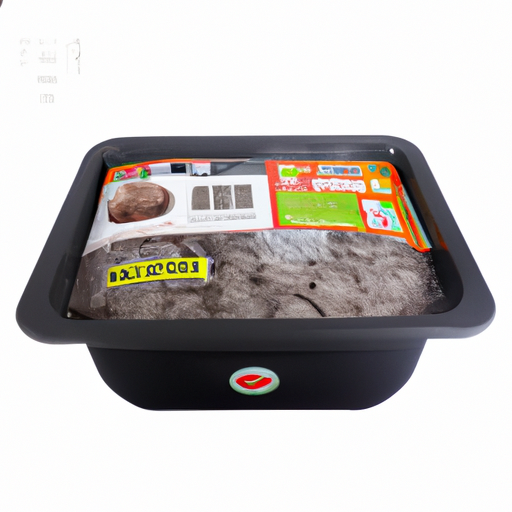
Mainstream Trigger Product Series Parameters IntroductionA trigger is a device that can activate or control other devices under specific conditions. They play a crucial role in modern technology and are widely used in industrial automation, smart homes, security monitoring, and other fields. With the continuous advancement of technology, the types and functions of triggers are constantly evolving to meet the needs of different scenarios. This article will delve into the parameters and applications of mainstream trigger product series to help readers better understand the selection and use of triggers. Two, Basic Types of TriggersTriggers can be classified into various types based on their working principles and application areas. Here are some of the main types of triggers: 1. Mechanical TriggersMechanical triggers operate through physical movement and are commonly found in traditional switches and relays. They typically have high reliability and durability, making them suitable for various industrial environments. The working principle of mechanical triggers is to switch the circuit through physical contact or movement. Common applications include motor starting and light control. 2. Electrical TriggersElectrical triggers use electrical signals to activate devices and are widely used in electronic products. They have fast response times, making them suitable for applications that require quick reactions. The working principle of electrical triggers is to control the circuit switch through changes in current. Common applications include electronic switches and relays. 3. Photoelectric TriggersPhotoelectric triggers operate by changes in light and are commonly used in safety monitoring and automatic doors. They have the advantage of non-contact operation, reducing wear and tear. The working principle of photoelectric triggers is to detect changes in light using photoelectric sensors to control the circuit switch. Common applications include automatic doors and photoelectric sensors. 4. Sound TriggersSound triggers activate devices through sound signals and are suitable for voice recognition and smart home applications. They have broad application prospects, especially in smart devices. The working principle of sound triggers is to receive sound signals through a microphone and convert them into electrical signals to control the circuit switch. Common applications include smart speakers and voice-controlled devices. Three, Mainstream Trigger Product SeriesThere are various trigger products available on the market. Here are introductions to several mainstream products: 1. Product AProduct Parameters: - Response Time: 5 milliseconds - Operating Voltage: 24V DC - Load Capacity: 10AApplication Scenarios: Industrial automation, robot control, etc.Product A is a high-performance electrical trigger suitable for industrial environments that require fast responses. Its low response time and high load capacity make it an ideal choice for automated production lines. 2. Product BProduct Parameters: - Operating Temperature Range: -20°C to +60°C - Durability: 1 million operationsApplication Scenarios: Home smart devices, security systems, etc.Product B is a mechanical trigger suitable for home smart devices, with good durability and a wide operating temperature range, ensuring stable operation in various environments. 3. Product CProduct Parameters: - Sensitivity: 0.1 Lux - Power Consumption: 5mAApplication Scenarios: Medical equipment, environmental monitoring, etc.Product C is a photoelectric trigger suitable for applications requiring high sensitivity, such as environmental monitoring and medical equipment. Its low power consumption design makes it more energy-efficient during long-term operation. 4. Product DProduct Parameters: - Installation Method: Wall-mounted - Compatibility: Supports multiple smart home platformsApplication Scenarios: Traffic management, smart cities, etc.Product D is a sound trigger suitable for smart cities and traffic management systems. Its wall-mounted installation method and wide compatibility make it easy to integrate into existing systems. Four, Technical Parameter Analysis of Trigger ProductsWhen selecting triggers, technical parameters are key factors. Here are some important technical parameters: 1. Response TimeThe response time of a trigger directly affects its performance, usually measured in milliseconds. The shorter the response time, the faster the trigger's response, suitable for applications with high time requirements. 2. Operating VoltageDifferent triggers have different operating voltage ranges, so it is important to choose according to actual needs. Common operating voltages include 5V, 12V, 24V, etc., and it is essential to ensure compatibility with the system's voltage. 3. Operating Temperature RangeThe operating temperature range of a trigger determines its suitable environment, considering extreme weather conditions. When selecting, ensure that the trigger can operate stably within the expected temperature range. 4. Load CapacityLoad capacity refers to the maximum current and voltage a trigger can withstand, affecting its application range. When choosing, evaluate based on actual load requirements to ensure the trigger can work safely and stably. 5. Safety StandardsTriggers must comply with relevant safety standards to ensure safety during use. Common safety standards include CE, UL, etc., and when selecting, ensure that the product meets the relevant certification requirements. Five, Trigger Selection and ApplicationWhen selecting triggers, consider multiple factors: 1. Factors to Consider When Choosing TriggersPerformance requirements: Choose triggers with suitable performance parameters based on specific applications, such as response time, load capacity, etc.Cost budget: Control costs while meeting requirements, choose products with high cost performance.Installation environment: Consider the trigger's working environment and choose the appropriate type, such as waterproof, dustproof, etc. 2. Application Cases of Triggers in Different FieldsIndustrial automation: Triggers are used for automatic control of production lines to improve production efficiency and safety.Home smart devices: Triggers enable automation control of smart homes, enhancing convenience in daily life.Security monitoring systems: Triggers are used for intrusion detection and alarm systems to enhance security protection for homes and businesses. Six, Future Development TrendsThe future development of triggers will be influenced by various factors: 1. Intelligence and AutomationWith the advancement of artificial intelligence and automation technology, triggers will become more intelligent, capable of performing more complex control functions. For example, by combining machine learning algorithms, triggers can automatically adjust their working status based on environmental changes, enhancing the system's level of intelligence. 2. Application of Green and Environmentally Friendly MaterialsIn the future, triggers will increasingly use environmentally friendly materials to meet the demand for sustainable development. With the growing emphasis on environmental protection, the market's demand for green products will continue to rise, and trigger manufacturers need to actively respond to this trend. 3. Integration of IoT and TriggersThe development of IoT technology will enable triggers to better interact with other devices, achieving more efficient control. Through internet connectivity, triggers can monitor and control devices in real-time, improving the overall efficiency and security of the system. Seven, ConclusionTriggers play a crucial role in modern technology, with their wide applications and evolving technology making them indispensable devices. By understanding the parameters of mainstream trigger product series, users can better choose triggers that suit their needs and support various applications. In the future, with technological advancements, the functions and applications of triggers will become more diverse and promising. Triggers are not only the control center of modern devices but also a significant force driving intelligence, automation, and sustainable development.

Gate electrode is an important electronic component widely used in various electronic devices such as transistors, integrated circuits, etc. In order to ensure the quality and performance of gate electrodes, a series of product standards have been established to guide the production and inspection processes. The following are the product standards for gate electrodes:1. Dimension and appearance requirements: The dimensions and appearance of gate electrodes should comply with relevant standard specifications, such as length, width, thickness, etc. The appearance should be free of obvious surface defects such as cracks, bubbles, pits, etc.2. Material requirements: The material of gate electrodes should meet relevant standard specifications, such as purity, composition, grain size, etc. Common materials for gate electrodes include metals, semiconductors, etc.3. Electrical performance requirements: The electrical performance of gate electrodes is one of its most important performance indicators. This includes leakage current, breakdown voltage, resistance, etc. These performance indicators should comply with relevant standard specifications to ensure the stability and reliability of gate electrodes during operation.4. Thermal performance requirements: Gate electrodes will be subjected to a certain thermal load during operation, so their thermal performance is also an important indicator. This includes thermal conductivity, coefficient of thermal expansion, etc. These performance indicators should comply with relevant standard specifications to ensure the stability and reliability of gate electrodes in high-temperature environments.5. Environmental adaptability requirements: Gate electrodes will be affected by various environmental factors during use, such as humidity, temperature, corrosion, etc. Therefore, the environmental adaptability of gate electrodes is also an important indicator. Gate electrodes should comply with relevant standard specifications to ensure their stability and reliability under various environmental conditions.In summary, the product standards for gate electrodes mainly include dimension and appearance requirements, material requirements, electrical performance requirements, thermal performance requirements, and environmental adaptability requirements. The establishment and implementation of these standards can effectively guide the production and inspection processes of gate electrodes, ensuring that their quality and performance meet the requirements, thereby improving the performance and reliability of electronic devices.
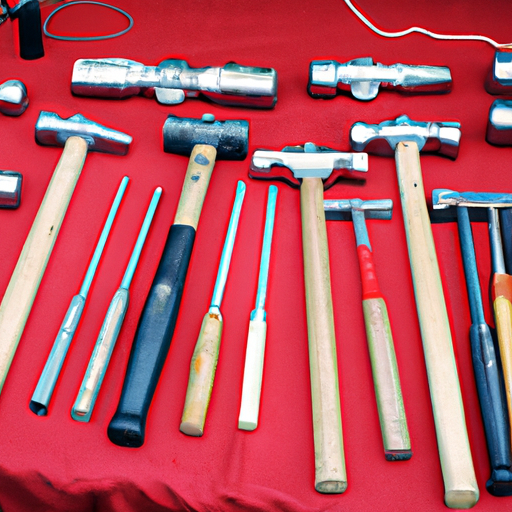
Transceiver is a device used for wireless communication that can receive and transmit wireless signals, and is an essential component of wireless communication systems. With the continuous development and popularization of wireless communication technology, the market size of transceivers is also expanding. According to data from market research institutions, the global transceiver market has shown steady growth in the past few years, and is expected to maintain a good growth momentum in the coming years.Firstly, with the commercialization of 5G technology, the transceiver market has ushered in new growth opportunities. 5G technology has higher transmission speeds, lower latency, and greater capacity, bringing revolutionary changes to wireless communication. As one of the core components of 5G networks, transceivers will play a more important role in the 5G era. It is predicted that the global 5G transceiver market will show rapid growth in the coming years, injecting new vitality into the entire transceiver market.Secondly, the rapid development of the Internet of Things (IoT) has also brought new growth opportunities to the transceiver market. With the popularity of IoT devices and the continuous expansion of application scenarios, the demand for wireless communication devices is also increasing. As a key component connecting IoT devices to networks, transceivers will play a crucial role in the IoT era. According to statistical data, the global IoT transceiver market will maintain steady growth in the coming years, providing new growth momentum for the entire transceiver market.Furthermore, the popularity of consumer electronics products such as smartphones and smart homes has also brought growth opportunities to the transceiver market. With the improvement of people's living standards and the continuous updating of consumer concepts, the demand for products such as smartphones and smart homes is constantly increasing. These products all require the use of transceivers to achieve wireless communication functions. According to market research data, the global consumer electronics product transceiver market will continue to grow in the coming years, injecting new vitality into the entire transceiver market.In conclusion, the transceiver market has broad development prospects and huge market potential. With the continuous development and popularization of wireless communication technology, the market size of transceivers will continue to grow. In the coming years, with the commercialization of 5G technology, the rapid development of IoT, and the popularity of consumer electronics products, the transceiver market will usher in new growth opportunities. At the same time, with continuous technological progress and increasing market demand, the transceiver market will continue to innovate and develop, making greater contributions to the development of the wireless communication field.

A receiver is a device used to receive wireless signals, typically used to receive TV signals, radio signals, satellite signals, etc. The main function of a receiver is to receive signals and convert them into a visual or audible form. Receivers usually consist of multiple components and modules, below is a detailed introduction to the components and modules of a receiver.1. Antenna: The antenna is an important component of the receiver, used to receive wireless signals. The design and performance of the antenna directly affect the reception effect of the receiver. Different types of receivers require different types of antennas, such as indoor antennas, outdoor antennas, satellite antennas, etc.2. Amplifier: The amplifier is an important module in the receiver, used to amplify the received signal. The amplifier can enhance the signal strength, improve the sensitivity and reception range of the receiver.3. Tuner: The tuner is another important module in the receiver, used to adjust the frequency of the receiver. The tuner can automatically adjust the frequency of the receiver according to the frequency of the received signal, ensuring that the receiver can correctly receive the signal.4. Demodulator: The demodulator is a key module in the receiver, used to demodulate the received signal. The demodulator can convert analog signals to digital signals, or digital signals to analog signals, so that the receiver can correctly process the signal.5. Digital Processor: The digital processor is an important module in the receiver, used to process the received digital signal. The digital processor can decode, decompress, filter the signal, etc., to ensure that the receiver can correctly display or play the signal.6. Display: The display is the output device of the receiver, used to display the received signal. The display can be an LCD screen, LED screen, TV screen, etc., used to display video signals or text information.7. Speaker: The speaker is the output device of the receiver, used to play the received audio signal. The speaker can be built-in speakers, external speakers, headphones, etc., used to play audio signals.8. Control Panel: The control panel is the operating interface of the receiver, used to control the various functions of the receiver. The control panel usually includes buttons, knobs, display screens, etc., used to adjust volume, channels, brightness, etc.In summary, a receiver consists of components and modules such as antenna, amplifier, tuner, demodulator, digital processor, display, speaker, control panel, etc. These components and modules work together to accurately and stably receive and process wireless signals, providing users with a clear audiovisual experience. Receivers have a wide range of applications in TV, radio, satellite communication, etc., and are essential devices in modern communication technology.
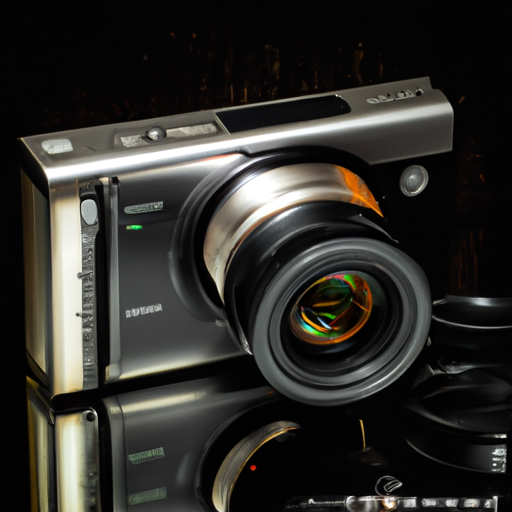
Drivers are software or hardware products used to control and manage computer hardware devices. They can be part of the operating system or separate software programs or hardware devices. The role of drivers is to enable hardware devices to communicate and cooperate with the computer system, allowing for data transfer and processing.Drivers typically consist of two parts: driver software and a controller. Driver software is a program used to communicate with and control hardware devices. They are usually developed by the manufacturer of the hardware device and provided with the hardware device. The controller is a hardware device used to convert the instructions sent by the driver software into signals that the hardware device can understand and execute.There are many types of drivers, including network drivers, printer drivers, sound card drivers, graphics card drivers, and more. Each type of driver has its specific function and purpose, used to control and manage different types of hardware devices. For example, network drivers are used to manage communication between computers and network devices, printer drivers control the printing process of printers, sound card drivers control the audio output of computers, graphics card drivers control the display output of computers, and so on.Drivers play a crucial role in computer systems. Without the correct drivers, hardware devices cannot function properly and may not even be recognized by the computer system. Therefore, installing and updating drivers is an important step in maintaining the normal operation of a computer system. Users can download and install the latest drivers through Device Manager or the official website of the hardware device manufacturer to ensure the proper operation of hardware devices.In conclusion, drivers are important products used to control and manage computer hardware devices. They facilitate data transfer and processing through communication and cooperation between software programs and hardware devices. Proper installation and updating of drivers can ensure the proper functioning of hardware devices, improve the performance and stability of computer systems. Therefore, users should prioritize the installation and updating of drivers to ensure the normal operation of computer systems.

A buffer is a device used to balance the speed difference between system inputs and outputs, allowing data to be stored between input and output for adjustment when needed. Buffers are widely used in many industries, and below we will introduce some of the main application scenarios.1. Computer Industry: In computer systems, buffers are widely used in memory, input/output devices, and network communication. For example, the buffer in a hard drive can help balance the speed difference between disk read/write and system processing speed, improving system performance. Additionally, buffers in network communication can help regulate data transfer speed to prevent data loss and delays.2. Electronics Industry: In electronic devices, buffers can be used to balance speed differences between different components, improving system stability and performance. For example, buffers in digital signal processors can help balance the speed difference between input and output data streams, ensuring accurate data transmission.3. Communication Industry: In communication systems, buffers can help balance speed differences between different devices to ensure smooth data transmission. For example, buffers in telephone systems can help regulate the transmission speed of voice signals to prevent data loss and delays.4. Automotive Industry: In automotive systems, buffers can help balance the speed difference between engine output and wheel speed, improving vehicle performance and stability. For example, buffers in automatic transmissions can help balance the speed difference between engine output and wheel speed, ensuring smooth acceleration and deceleration of the vehicle.5. Industrial Automation Industry: In industrial automation systems, buffers can help balance speed differences between different devices to ensure the smooth operation of production lines. For example, buffers in PLC control systems can help regulate the speed difference between sensors and actuators, ensuring the efficient operation of production lines.In conclusion, buffers have wide applications in various industries, helping to balance the speed difference between system inputs and outputs to improve system performance and stability. With the continuous development of technology, the application scope of buffers will become increasingly wide, providing more possibilities for the development of various industries.
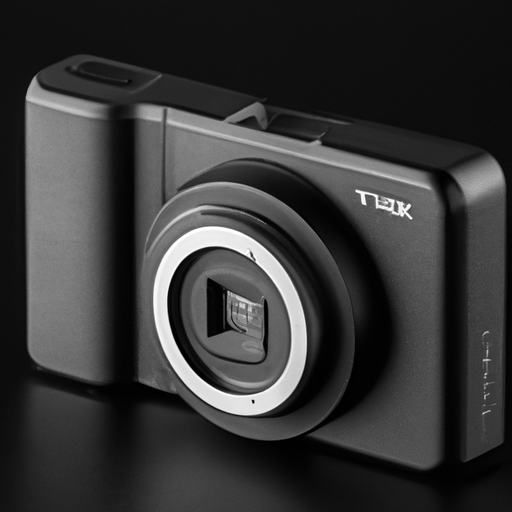
With the continuous development of technology, specialized logic products have been widely used in various fields. Popular types of specialized logic products have emerged, providing more efficient and intelligent solutions for various industries. Below are some popular types of specialized logic products.1. Artificial Intelligence Chips: Artificial intelligence chips are chips specifically designed to accelerate artificial intelligence calculations, capable of processing large amounts of data and complex algorithms in a short period of time. Artificial intelligence chips are widely used in image recognition, speech recognition, natural language processing, and other fields, providing strong support for the development of artificial intelligence technology.2. IoT Chips: IoT chips are chips specifically designed to connect IoT devices, enabling interconnection between devices. IoT chips are widely used in smart homes, smart cities, smart healthcare, and other fields, providing an important foundation for achieving intelligent living and working.3. Blockchain Chips: Blockchain chips are chips specifically designed for cryptocurrency transactions and data storage, enabling secure and reliable data transmission and storage. Blockchain chips are widely used in digital currency transactions, data security storage, and other fields, providing important protection for user privacy and data security.4. Cloud Computing Chips: Cloud computing chips are chips specifically designed for cloud computing services, enabling large-scale data processing and storage. Cloud computing chips are widely used in cloud service providers, big data analysis, and other fields, providing strong support for cloud computing and storage.5. Edge Computing Chips: Edge computing chips are chips specifically designed for edge computing services, enabling data processing and analysis at the device side. Edge computing chips are widely used in smart IoT devices, smart factories, and other fields, providing important support for achieving device-side intelligence.In general, popular types of specialized logic products cover artificial intelligence chips, IoT chips, blockchain chips, cloud computing chips, and edge computing chips, among other areas, providing more efficient and intelligent solutions for various industries. With the continuous progress of technology and the expansion of application scenarios, popular types of specialized logic products will continue to emerge, providing more possibilities for driving technological innovation and industrial development.

Logical products refer to products designed and developed through logical thinking and analysis. These products have many advantages that make them competitive and attractive in the market. Here are some advantages of logical products:1. Logical products offer a better user experience. Since logical products are designed through logical thinking and analysis, they are usually more aligned with user needs and expectations. This makes it easier for users to understand and use the products, thereby enhancing the user experience.2. Logical products have higher reliability and stability. The design and development process of logical products undergo rigorous logical analysis and testing, resulting in higher quality and stability. This makes logical products more reliable, and users can confidently use them.3. Logical products have higher performance and efficiency. The design and development process of logical products focus on efficiency and performance optimization, making the products more seamless and efficient to use. This allows users to complete tasks more quickly, improving work efficiency.4. Logical products have better maintainability and scalability. The design and development process of logical products consider the maintainability and scalability of the products, making them easier to maintain and upgrade. This allows the products to adapt to changing needs and environments.5. Logical products offer better cost-effectiveness. Due to the rigorous logical analysis and optimization in the design and development process of logical products, they usually have a higher cost-performance ratio. This allows users to obtain a better product experience at a lower cost.In conclusion, logical products have advantages in user experience, reliability, performance, maintainability, and cost-effectiveness, making them competitive and attractive in the market. The design and development process of logical products emphasize logical thinking and analysis, making the products more aligned with user needs and expectations, more stable and reliable, more efficient and seamless, easier to maintain and upgrade, and more cost-effective. Therefore, logical products have significant importance and value in today's competitive market environment.